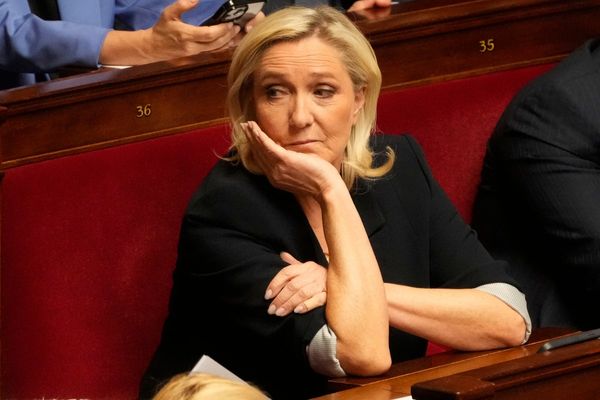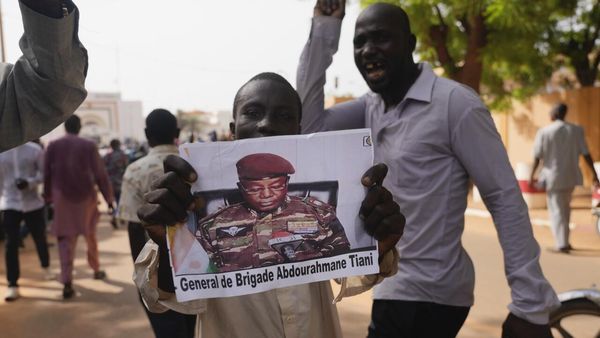
As the conflict in Ukraine nears its first anniversary, both sides have settled in for a long war. Russia mobilized some 300,000 reservists in September to stabilize its front as winter set in. Despite recent successes in Kharkiv and Kherson, Ukrainian leaders are now warning that a new Russian offensive is imminent, boosted by these reinforcements. Some analysts believe that this offensive may already have begun. But there is little reason to expect that increased manpower alone will lead to Russian victory. Ukraine’s Western backers should hold their nerve and keep providing Ukraine with what it needs most: modern weapons and the training to use them effectively.
After the invasion’s initial repulse, Russian President Vladimir Putin procrastinated on further mobilization as long as possible, summoning reserves only when the situation forced him to. Russia does not have a ready and deployable reserve like America’s Army Reserve or National Guard. Russian reservists are simply men who previously served as one-year conscripts—most of them many years removed from the military. Less than 10 percent of those now mobilized had carried out any refresher training within five years of leaving active service. Russian Defense Minister Sergei Shoigu himself noted that the average age of mobilized soldiers was 35.
Hastily equipped with old weapons, Russia’s mobiks were rushed into combat—with predictable results: immediate heavy casualties. According to a recent estimate from Norway’s defense chief, the total number of Russians killed or wounded in the war is nearing 200,000.
Russia’s belated, partial mobilization did put men in uniform in Ukraine in time for winter, but at the cost of some social unrest and a significant brain drain. A spate of protests occurred and several recruiting stations were set on fire or shot up, while hundreds of thousands of young men, many of them from Russia’s educated professional class, have fled to neighboring countries such as Armenia and Georgia.
Numbers alone are seldom the determining factor in modern war. All else being equal, the side that can throw more troops into battle has a big advantage. But all else is almost never equal. In this war, the Ukrainians’ superior ability to both employ and evade firepower has been the crucial component.
Historians and pundits are apt to note Russia’s record of eking out victories of grinding attrition and invoke the country’s tolerance for enormous casualties and its scant regard for the lives of its soldiers. But the character of war (though not its nature) has changed since the days of Peter the Great and Napoleon. In a process that began more than a century ago, modern firepower has “emptied” the battlefield, as military analysts say. Units have to disperse and seek cover and concealment from enemy observation and the fire that follows it. That has become only more emphatically the case on battlefields surveilled by satellites and growing drone fleets.
Firepower is key to victory, but its effects depend on the relative tactical skill and flexibility of the forces employing and facing it. Advances in military technology have dramatically magnified the rewards for superior combat skill—while punishing ineptitude ever more harshly. In his 2004 Military Power, the Columbia professor Stephen Biddle dubbed this “the modern system.” Armies that lack the tactical proficiency and cohesion to disperse and survive in the face of enemy surveillance and firepower are little better than targets. The Russians have demonstrated in this year of conflict that they are that kind of army.
In manpower terms, the Russian armed forces entered the war with a professional core of contract soldiers that was too small, augmented by hundreds of thousands of conscripts with basic training and the expectation that they would only ever be asked to fight in a war of national defense. Thanks to the shortage of noncommissioned officers—the hands-on tactical leaders who ensure small-unit success in Western armies—Russian troops immediately showed a deficit of discipline that has made them vulnerable to determined Ukrainian defenders. Vehicles have frequently been abandoned undamaged, communications security (such as limiting cellphone use during fighting) has been nonexistent, and troops have huddled together for a false sense of security, making them big targets for Ukrainian firepower. Within a week of the initial invasion, Russian soldiers were sometimes sabotaging their own vehicles to evade combat.
Ukrainian success has come down to skillful use of modern weapons against this incompetent and demoralized enemy. A succession of Wunderwaffe, or wonder weapons, has been much hyped: Turkish Bayraktar attack drones, Javelin anti-tank missiles, and, most recently, HIMARS rocket artillery. All of these have had an impact, but none individually has been decisive. Javelins and HIMARS are not new; both systems were first fielded in the 1990s. They have, however, been brutally effective against poorly employed Russian troops and vehicles. By some estimates, Russia has lost half of its entire operational tank fleet in a year of fighting.
The Biden administration is now fending off calls to provide the Ukrainians with F-16 jets and ATACMS ballistic missiles. Because concerns about a Russian escalation aimed at Ukraine’s Western allies still linger, even if they have diminished, the U.S. is rightly focusing on Ukraine’s near-term needs: armored vehicles to provide protected mobility and artillery to continue to wear down Russian forces.
Less high-profile than the hardware, Western training and advising have been almost as significant. The Ukrainians identify and prioritize Russian targets, but the U.S. military reportedly provides the precise GPS coordinates for a great majority of HIMARS strikes. Though difficult to quantify, U.S. training of Ukrainian forces since Russia’s initial incursion back in 2014 has undoubtedly played a role in Ukraine’s success to date. A far more ambitious effort planned in Germany could help Ukrainian forces increase their overall proficiency in combined arms even as they suffer heavy casualties and continue to integrate tens of thousands of new soldiers into their formations.
Many have likened the war in eastern Ukraine, with its trenches, mud, and incessant shelling, to World War I. But another echo of the Great War is worth remembering: collapse. Like Putin’s troops, the Imperial Russian Army went to war in 1914 woefully unprepared, without even enough rifles for its soldiers. As in 2022, the Russian battalions of 1914 suffered dearly for the hubris of their political leaders and the incompetence of their generals. After a shattering initial repulse at Tannenberg by the Germans—who were even more outnumbered than the Ukrainians are today—the Russians settled in for a long fight. But Imperial Russia would be out of the war sooner than any other major nation.
Every army that started the war in 1914, with the singular exception of Britain’s, suffered a crisis of cohesion and morale, culminating in mutiny, mass desertion, even revolution. In Russia, Czar Nicholas II was forced to abdicate after protests and violence, when soldiers joined demonstrators on the streets of Petrograd (St. Petersburg). The strains of war, and the loss of any remaining faith in its leaders, drove Russia past the breaking point.
Deteriorating morale on the front lines and at home is mutually reinforcing, especially in an age of near-universal cellphone ownership and social-media use. Yevgeny Prigozhin, the founder of Russia’s brutal Wagner Group of mercenaries, has just announced that he will no longer fill the ranks of his private military with Russian convicts. This move is probably driven less by any ethical considerations—for months, Wagner has fed tens of thousands of men into the meat grinder in the Donbas—and more by the fact that news of the grim reality has gotten out. As a result, Prigozhin’s task of filling his penal battalions has gotten far harder. Russia’s conventional army is facing similar recruiting problems.
For two decades, Putin has been free to rule as he wished by insulating the Russian people from political concerns, an implicit bargain that runs from the oligarchs to the middle class. His reluctance to mobilize has been driven at least in part by fear of a political backlash to the call-up. It remains to be seen whether Russian mobilization ends up being a bigger threat to Putin’s hold on power than to Ukraine’s sovereignty.
Ukraine appears now to have lost the manpower advantage it briefly held last year. But Russia’s increased numbers are unlikely to overcome Ukrainian will and skill. As the French philosopher Voltaire noted more than two centuries ago: “God is not on the side of the big battalions, but on the side of those who shoot best.”







